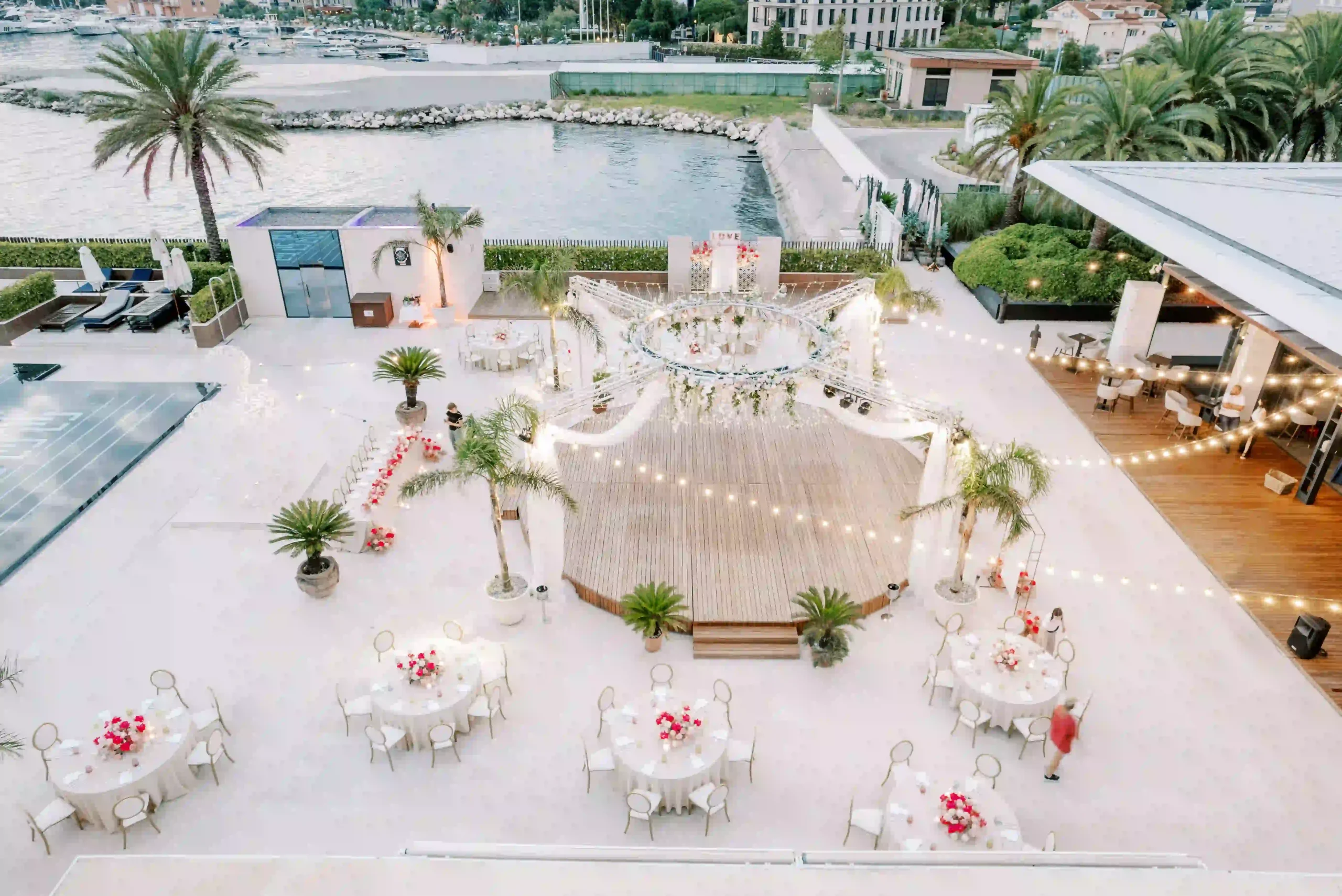Picture this: a vibrant crowd is buzzing with excitement, artists are in lively conversation with patrons, food stalls are bustling, and every single ticket is sold out. This is the dream for any cultural or arts festival. But what separates a sold-out sensation from an empty hall?
In Gujarat, especially Ahmedabad, we have a deep appreciation for art and culture, from the intricate kites of Uttarayan to the vibrant nights of Navratri. But, this appreciation doesn’t automatically guarantee a full house.
The secret isn’t just luck; it’s strategy. It’s the unseen, meticulous work of professional event management. A successful festival is a complex performance, and event management is the director ensuring every single detail is perfect.
Here are 10 “secrets” from the world of professional event management that can turn your next cultural festival into a landmark event.
1. Define Your ‘Why’ Before Your ‘What’
The Secret: Your festival must have a soul. Before you book a single artist or stall, you must define your curatorial vision. Why does this festival need to exist now? What story are you telling?
How it Works: A strong vision is your filter for every decision. If your festival is about “Emerging Gujarati Artists,” you can easily say ‘no’ to any distraction, no matter how tempting it seems. This clarity becomes your strongest marketing tool. This foundational step is the cornerstone of all good event management.
2. Master Hyper-Local Curation with Global Appeal
The Secret: A sold-out event resonates deeply with the local audience. While it’s tempting to book international names, the most successful festivals feel like they belong to the city.
How it Works: An expert event planner in Ahmedabad understands the local pulse. They understand that people here want an experience that celebrates their city, while also showing them something new. Weave in local artisans, partner with beloved local food brands, and tap into community narratives. This hyper-local focus makes your event an authentic must-attend for the community, not just another generic show.
3. The ‘Experience’ is the Main Exhibit
The Secret: People don’t just come for the art; they come for the experience. From the moment they step in, all their senses should be engaged. This is where high-level event management truly shines.
How it Works: Think beyond the exhibits. What does the festival feel like?
- Crowd Flow: How do people move through the space?
- Soundscape: What music is playing between stages?
- Atmosphere: What are the aromas from food stalls?
- Comfort: Are the seating areas inviting and comfortable? This ‘atmospheric design’ is a key part of event management that transforms passive viewers into active, delighted participants who stay longer and spend more.
4. Treat Logistics as an Art Form
The Secret: The most brilliant artistic vision will fail if the logistics are not handled properly. A sold-out festival has hundreds of moving parts, and managing them is an art in itself. This is where art festival logistics become critical.
How it Works: This covers everything:
- Vendor Management: A smooth entry and setup process for artists, food stalls, and suppliers.
- Crowd Flow: Designing the layout to prevent bottlenecks and guide attendees naturally.
- Safety & Security: Flawless planning that is invisible to the guest but ensures their complete safety.
- Technical: Ensuring every mic, projector, and light works perfectly, every time.
Poor art festival logistics are what people remember most. Great event management makes these complexities disappear, leaving only a seamless experience.
5. Start Your Digital Drumbeat Immediately
The Secret: A “sold-out” event sells most of its tickets long before the opening day. Promoting a festival isn’t a one-time announcement; it’s a continuous, building rhythm.
How it Works: This directly answers the question of how to market a cultural festival. Start your social media campaign months in advance. Share behind-the-scenes content of artists preparing, run early-bird ticket promotions, and create a compelling visual identity. This sustained “drumbeat” builds anticipation and community, making a ticket feel like a must-have.
6. Build Strategic Alliances
The Secret: You don’t have to manage every single component alone. The most successful events are built on a foundation of strong professional relationships.
How it Works: This is about building a robust supply chain and support network, not just community promotion. A smart event planner in Ahmedabad will secure reliable, high-quality suppliers, technical crews, and venue management. This includes fostering good relationships with corporate sponsors who can fund parts of the event in exchange for brand visibility. These business transactions are a critical part of cultural event planning that ensures a high-quality, professional outcome.
7. Engineer ‘Instagrammable’ Moments
The Secret: Your attendees are your best marketing team. You need to give them something to talk about, and share.
How it Works: This is a core tactic of modern event management. Design specific installations, backdrops, or even creative food displays that are visually stunning and make people want to take photos. When an attendee shares a photo from your event, they are giving a personal, trusted recommendation to their entire network. You can’t buy that kind of publicity.
8. Use Seamless Technology
The Secret: Hassles kill excitement. A slow ticketing website, a long entry queue, or a difficult payment system can sour an experience before it even begins.
How it Works: Professional event management involves investing in a solid technology backbone. This means a mobile-friendly ticketing platform, the option for cashless payments, and a robust entry system that gets people inside quickly. The best tech is invisible; it just works.
9. Create Scarcity and Urgency (Ethically)
The Secret: People value what is limited. A sold-out event feels exclusive and important. Your ticketing strategy should reflect that.
How it Works: Don’t just open all tickets at once. Create tiers:
- A limited “Early Bird” batch at a discount.
- A “Phase 1” release.
- “Final Release” tickets.
- Exclusive (and limited) add-ons like artist-led workshops or VIP lounge access.
This structure encourages early commitment and creates buzz as each tier “sells out,” building momentum toward your final goal. This is smart event management.
10. The Post-Event Follow-up Builds Your Legacy
The Secret: The event management doesn’t stop when the last guest leaves. The follow-up is where you build the foundation for next year’s sold-out event.
How it Works: Send a “thank you” email to all attendees, vendors, and artists. Share a beautifully produced highlights video. Run a survey to gather feedback. This post-event engagement makes your community feel valued and transforms one-time attendees into loyal fans who will be first in line for tickets next year.
Bringing It All Together: The Janta Decorators Touch
With 50+ years of collective experience in event management in Ahmedabad, Janta Decorators has been a key partner in bringing many of Ahmedabad’s events to life. We’ve seen firsthand how these “secrets” apply across every sector, from corporate functions to public festivals.
As an expert event planner in Ahmedabad, we understand that managing a cultural festival requires a dual focus: the creative vision and the public experience. Our role in event management is to provide the flawless logistical and technical foundation that allows the art and artists to shine, ensuring a seamless and impressive experience for every guest. From bespoke gallery-style stalls and atmospheric lighting to robust logistical frameworks for massive crowds, we are the architects of that experience.
Conclusion: From Vision to Sold-Type Reality
A sold-out cultural or arts festival is a masterpiece of strategy, creativity, and careful execution. It requires a deep understanding of art, but also of logistics, marketing, and human psychology.
These 10 secrets are the pillars of professional event management. They are the difference between hoping for a crowd and building one.
If you have a vision for a cultural event that will capture the imagination of Ahmedabad and all of Gujarat, you don’t have to do it alone. Contact a professional event planner in Ahmedabad like Janta Decorators, and let’s build a sold-out success story together.
Frequently Asked Questions (FAQ)
1. What is the single biggest mistake in cultural event planning?
The biggest mistake is underestimating logistics. Many first-time planners focus 90% on the art and 10% on the ‘boring’ stuff like power, restrooms, crowd flow, and permits. A professional event management team knows that a flawless logistical foundation is what allows the art to shine.
2. How far in advance should I start planning a large arts festival?
For a large-scale public festival, you should begin planning 12 to 18 months in advance. This allows time for venue booking, securing top artists (who have busy schedules), getting permits, and, most importantly, building a good marketing campaign.
3. Why should I hire an event management company for a non-profit arts festival?
Because it is often more cost-effective. A professional event management company has established relationships with vendors, technical crews, and suppliers, which can lead to big cost savings. They also manage the hundreds of details that can drain your team’s time and energy, allowing your staff and volunteers to focus on their core roles like fundraising and curation.

